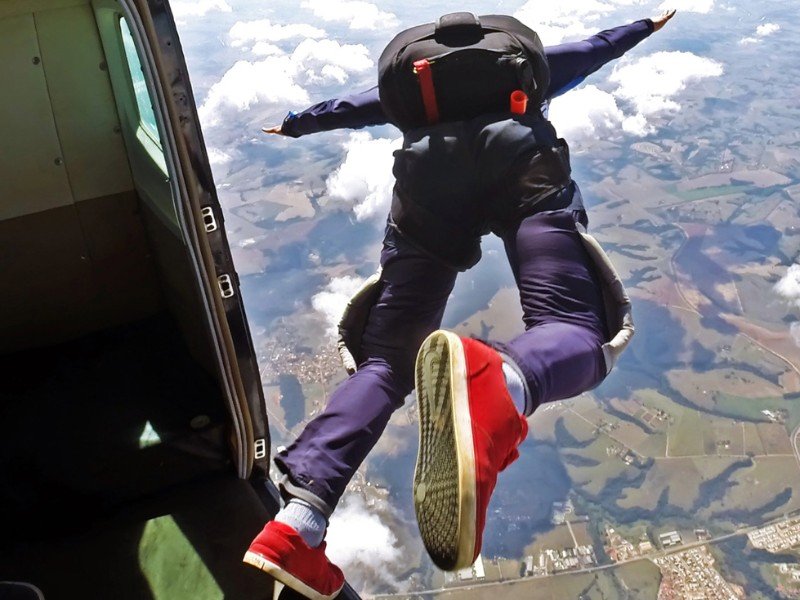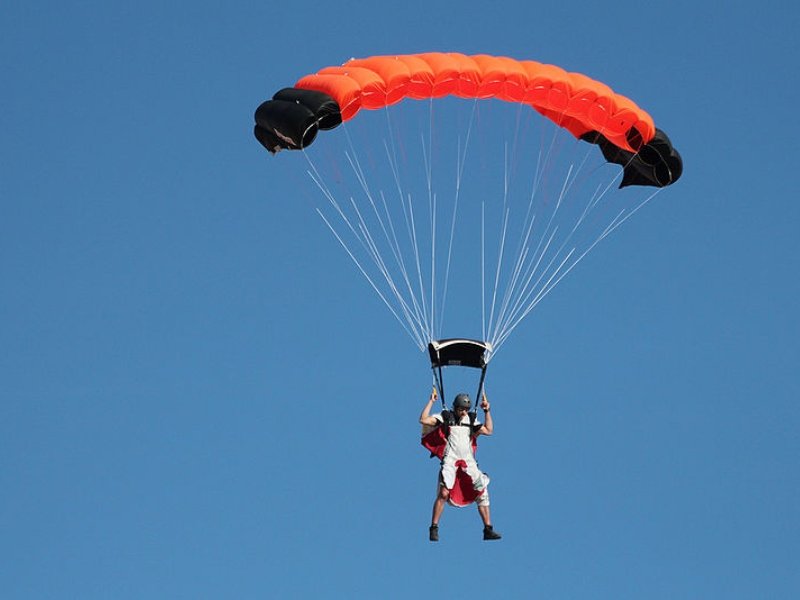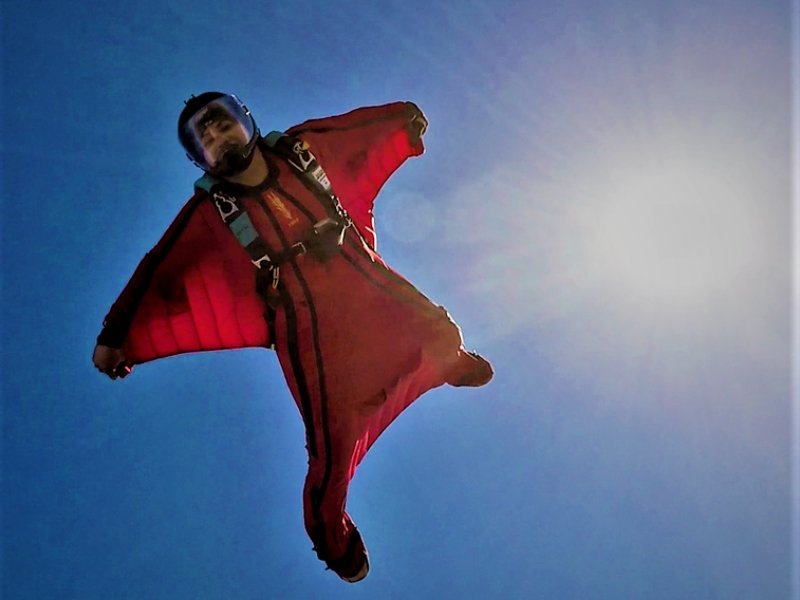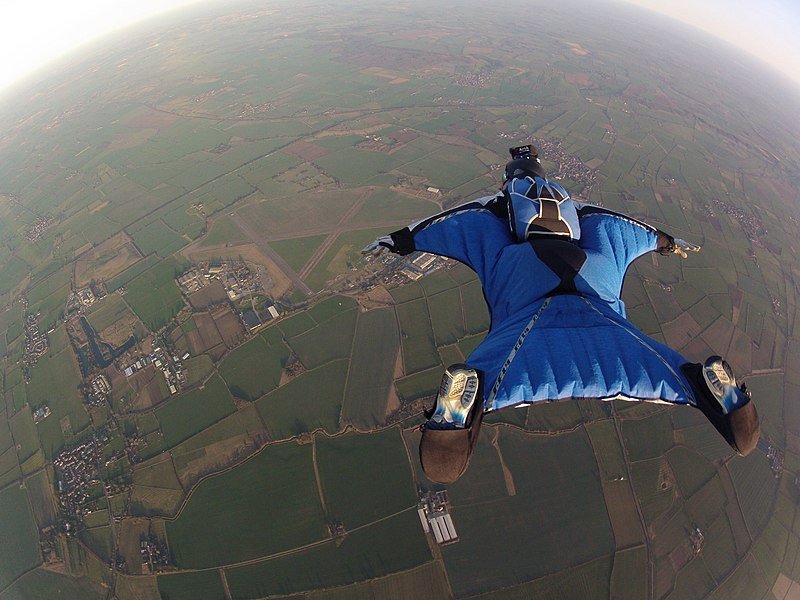Wingsuit flying is the closest sport we have to actual human flying. Watching a wingsuiter soar through the mountains using nothing but air and physics to control the flight is breathtaking. Many skydivers watch in awe but have little determination of ever getting to wingsuit themselves. The journey to wingsuiting isn’t a simple one, and you’ll need a lot of time, money, and patience. But it’s also not impossible. Let’s explore the steps of how to learn wingsuit flying.
Like base jumping, wingsuiting is one of the most extreme of extreme sports. Skydiving is considered a relatively safe sport in the present company, but wingsuiting carries considerable extra dangers. Because of the risks involved, you will first need to master both skydiving and base jumping before you can start swooping through those valleys like an eagle.
Let’s take a look at the five significant steps to becoming a wingsuit flyer.
Five steps to learn wingsuit flying
To help walk through the long journey from your first day at jump school to becoming a seasoned wingsuit flying pro, we’ve broken it down into the five stages :
- Learn to skydive
- Learn to base jump
- Go to a wingsuit school
- Get the right wingsuit equipment
- Keep practicing wingsuit flying
Learn to skydive

Your wingsuiting journey started at jump school. If you want to strap into a wingsuit and soar, the first step is to take a beginner’s course in skydiving. Learning to skydive is not a simple or insignificant thing, and it’s an experience that will change your life for the better. During your apprenticeship as a rookie skydiver, you’ll learn all about freefall control and stability. You’ll also learn the basics of parachuting and landing safely on the ground.
By completing your first 25 solo skydives and passing the exam, you’ll get your skydiving A license. But you’re still not yet ready to start learning wingsuit flying. USPA affiliated programs require prospective wingsuit students to have at least 200 completed solo skydives in the last 18 months (or 500 lifetime solo skydives) to join a wingsuit beginner’s class. This requirement may seem excessive, but such are the dangers and risks of wingsuiting; it’s essential.
After 50 or so skydives, you may start to feel very stable and comfortable in freefall, but that doesn’t prepare you for wing suiting. In a wingsuit, the suit’s added surface area and aerodynamics mean every slight movement can affect how you move through the air; every adjustment you make is exaggerated. You may also be comfortable deploying your parachute, but with wingsuiting, you’ll be using much more unforgiving gear and deploying at much lower heights and less natural angles. You need absolute mastery in both freefall and parachute deployment before progressing to wingsuit flying.
Learn to base jump

Even after gaining your skydiving B license and completing 200+ solo skydives, you might not want to rush into wingsuit flying yet. Most wingsuiters like to jump from objects such as bridges, mountains, and cliffs; it’s a big part of the sport. To prepare yourself for lower altitude jumps and object jumping, you need to learn to base jump.
Base jumping is as dangerous as wingsuit flying, and to get started, you’ll need a good course and mentor. Learning to base jump means heading back to the classroom, studying the basics, and learning about risk assessment. A good trainer will get you through those first ten base jumps, helping you develop new instincts and sharpen your low altitude skills. We’d suggest completing at least 50 base jumps under supervision or mentorship to get you to a decent level.
We would also suggest keeping skydiving and base jumping regularly. Each sport allows you to practice and hone your skills. The best jumpers are those who are always looking and learning. By now, you will also be an essential part of the community. Having fellow skydiving and base jumping enthusiasts you can travel and jump with will make it more fun and give you a solid support network.
Go to a wingsuit school

By now, you will have 100s of skydives under your belt and also be a reasonably good base jumper. It’s only at this stage where you can confidently begin a wingsuit flying course. You’ll need all that practical knowledge and experience as you learn to wingsuit fly, but you’ll still have plenty to learn.
First, you’ll need to study the theory of wingsuit flying. Controlling a wingsuit and navigating objects when in flight will be a new experience and skill set. You’ll need to master the risk assessment, knowing where and when to jump. Flying near horizontal, you’ll need glide and speed adjustment skills, knowing how to approach slots and break off safely. There’s a lot to learn in the classroom and in watching your instructors, but also plenty to experience in those first wingsuit flights.
As you start to learn more advanced skills under the tutorship of your instructors and mentors, you’ll begin to build a sense of what you can and can’t do (safely). You’ll develop skills in transitions, back flying, and more advanced technical maneuvers. These dynamic flying skills will all become crucial to your survival. When you are soaring at low altitudes, you need to have a good range of skills and maneuvers to negotiate the unexpected.
Get the right wingsuit equipment

You will probably already have a good amount of skydiving and base jumping equipment by now. While a good wingsuit flying school will provide you with everything you need to learn, once you graduate and are ready to fly solo, you’ll want to build your own collection of gear.
The essential piece of equipment in wingsuit flying is your wingsuit (also known as a bird suit). There are many different wingsuits targeted to various skill levels and how you want to sly. As a learner, you’ll have a very safe and stable suit. This beginner’s wingsuit will have restrictions on how fast you can fly and how much flexibility and maneuverability you have, but it will be easier to control safely. As you grow in skill and experience, you’ll soon start wanting to upgrade to a more advanced suit.
Once you have passed 100 wingsuit flights, you can consider moving up to an intermediate-level suit. To handle an intermediate-level suit, you should have a strong skill set and be able to confidently enter, hold, and exit flocking formations. You should also have an intermediate canopy rating from the USPA.
Once you pass 100 wingsuit flights in an intermediate suit, you can consider flights in advanced wingsuits. Advanced level wingsuits usually require some specific additional training. Such suits offer incredible control and impressive speeds, but they are highly unstable. Before trying this suit level, you should be at the level of mentor yourself, with exceptional freefall and canopy skills.
You should always consult with an expert when choosing a wingsuit. While there are guidelines for how many wingsuit flights you should complete before advancing your equipment, always get a professional opinion.
Keep practicing wingsuit flying

By this stage, you are already a highly skilled wingsuiter, but this is still an essential final step. And that’s always to keep practicing and never stop learning. Don’t stop skydiving or base jumping, even if you are obsessed with wingsuit flights. Continuing to practice all three disciplines regularly; this will make you the best wingsuit flying you can be. A great wingsuit flyer will learn something from every skydive, base jump, and wingsuit flight they take.
It’s also essential to build good relationships with other skydivers and wingsuit flyers. Jumping and flying with other skilled pilots will help keep you focussed and safe; you will also help keep them safe. The best wingsuit flyers aren’t the ones who take on the most daring and risky flights but are the ones who carry on jumping and flying safely year on year. You should keep progressing and growing your skills, but never lose sight of your limits and maintain excellent risk assessment. Always be safe and never stop having fun.

